Some vespid species are known as solitary. However, there are exemptions such as paper wasps and bald-faced hornets. They are social and inclined to build large colonies.
The workers in a wasp colony in areas located in the northern latitude died because of cold weather and starvation.
Not everyone is gone as the queen survives. After mating, she finds a safe place to spend the winter and re-establish a colony. Beware, as it can get into your house for shelter.
How to get rid of wasps in your house? You can choose from several sprays that are formulated to kill wasps in the market. A mixture of soap and water can replace the ready-to-use spray.
This article will provide sufficient information to evaluate if you can do it yourself or let a professional take care of your wasp problem at home.
Different Types of Wasps
Mud Daubers
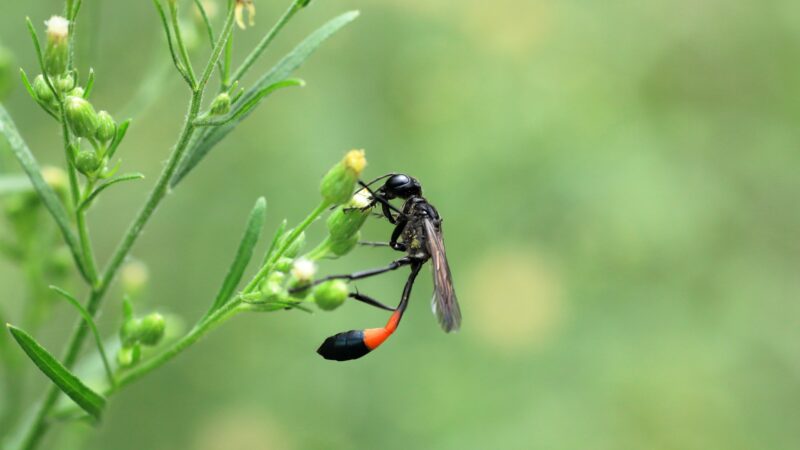
Compared to other wasp species, these ones are less hostile. They can be identified by their lengthy thin bodies and dark wings. The majority of them are brown or black, while some could have yellow stripes. Despite frequently constructing nests on houses and buildings, they hardly ever sting.
Paper Wasps
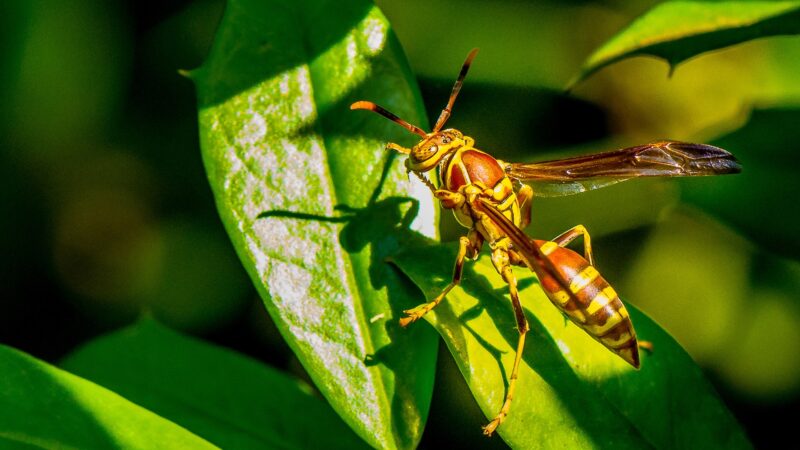
Paper wasps are brownish in hue, like mud daubers, but certain species can be identified by their red striped wings. On tree branches, porch ceilings, door frames, and windows, their paper-like nests in the form of umbrellas can be seen.
Yellowjackets
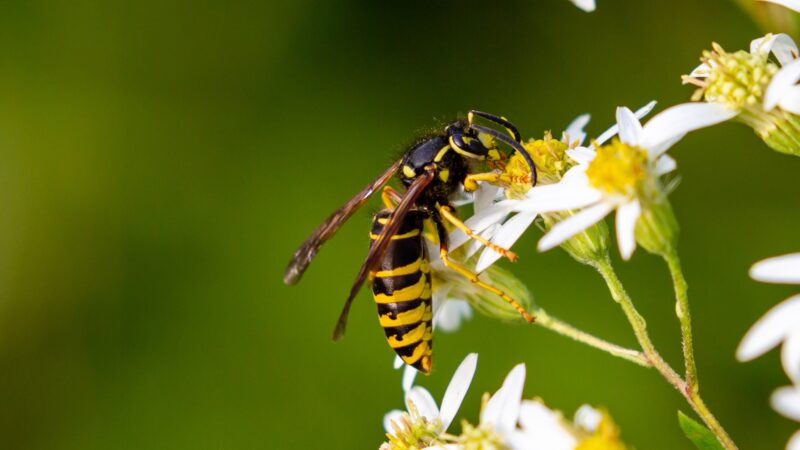
Yellow jackets, one of the most prevalent and violent wasp species, are distinguished by their yellow bodies and black markings. When in danger, they frequently sting multiple times because to their extreme territoriality.
Bald-Faced Hornets
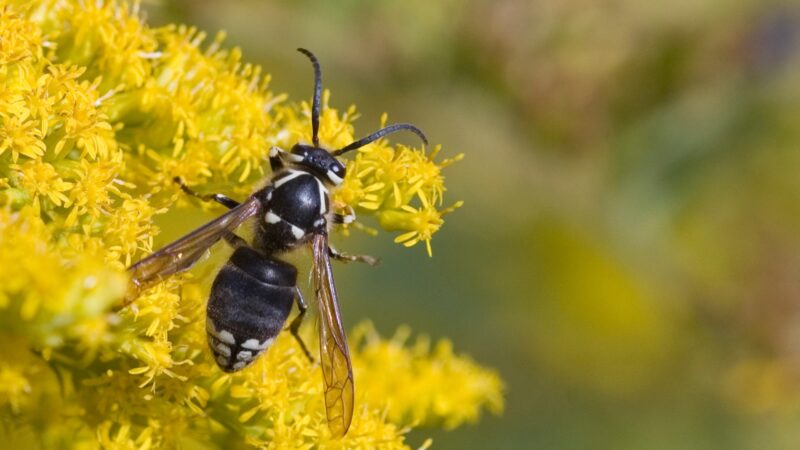
The bald-faced hornet is a huge, mostly-black hornet that is hostile in nature. Its markings are either white or ivory. Being one of the gregarious insects, they like residing in enormous colonies. In your garden, be on the lookout for their spherical, papery nests, which are typically found in shrubs and trees.
European Hornets
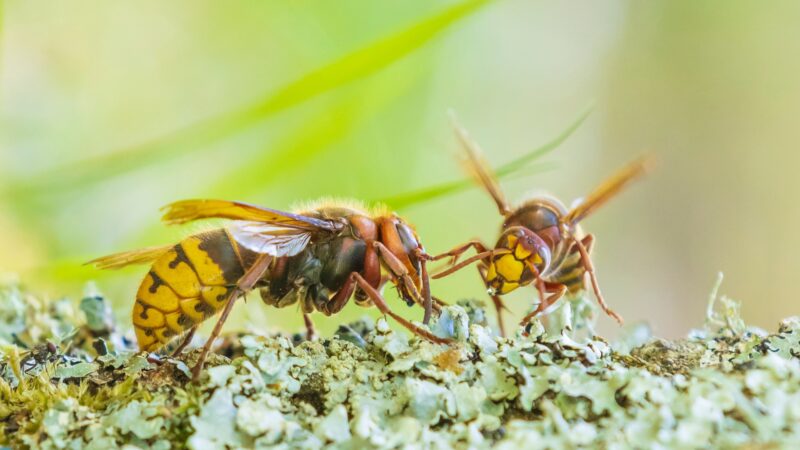
European hornets are brown with yellow stripes, however they are not violent until they feel provoked. According to the University of Maryland Extension, their nests are concealed in a variety of locations, including ceilings, barns, and even abandoned bee colonies. The typical nest has 200 to 400 workers.
Why Do Wasps Try to Get in the House?
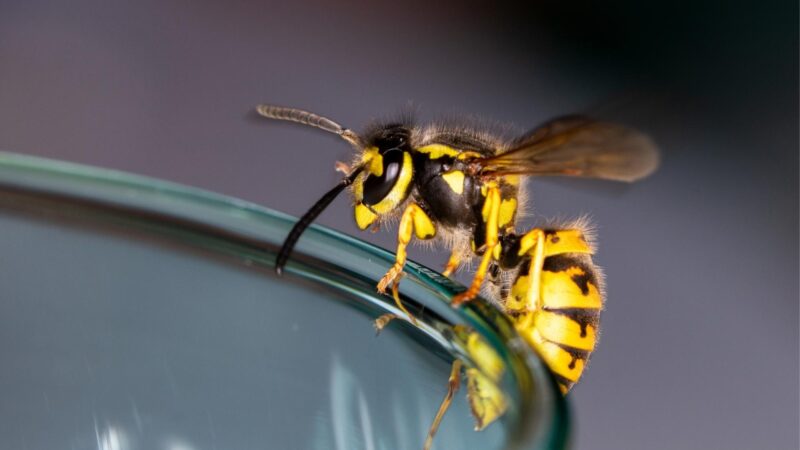
The queen wasp mates around fall, and as the temperature drops, it seeks a secure place to start a colony. She prefers a refuge which can be your house. The ideal places are the attic, wall voids, and similar areas.
How Do Wasps Get in the House?
Wasps are active in late winter and early spring when the temperature gets a bit warmer, around 70 degrees Fahrenheit. When situated in a wall void, vent, or chimney, they search for light. Instead of going outdoors, they tend to move inside the house.
Slow-moving wasps usually crawl on the window area and floor of a house. When these insects successfully get inside, they are usually left unnoticed. You may even step on it, or the wasp got caught up in clothes.
It seems that this is a harmless situation. On the contrary, it’s a disadvantage as you may get stung without any warning.
However, the wasps that are active during the warm days of winter and early spring are not aggressive. Hence, there’s a low chance of attack. They usually fly around during the day and settle down at the end of the day when the surrounding becomes cool.
Why Do I Keep Finding Wasps in My House?
You will likely face this problem in late summer and early fall. The wasp colonies are getting into their maturity stage. Thus, numerous workers forage or search for food that is delivered to the queen.
When the number of insects that they prey on dwindles, they will seek other nutrition sources.
Wasps are into sweets like ice cream, soda, fruits, and more. They will also feast on fish, meat, and similar types of food. To counter their foraging habits, you have to always close the garbage bins placed inside your house.
It’s best to cover your food after meals. Wasps won’t keep on visiting your house when they can find nothing.
How Long Can a Wasp Live Inside Your House?
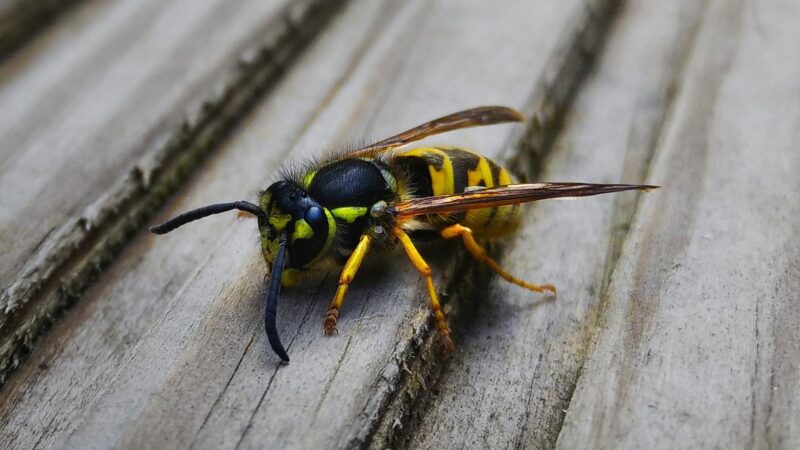
A wasp can live up to 3 or 4 days inside your house when it can’t have access to food. However, it can survive indoors for 3 months if it has food and water.
How to Know You Have A Wasp Infestation?
Wasp infestations are often much easier to get rid of with early action. Watch out for these indications of wasp activity in your house and yard.
Increased Wasp Activity
One of the most obvious indications of a wasp infestation is a rise in wasp activity. It may be a sign that a nest is close by if you notice a lot of wasps flying over your property, especially in one place.
You’re likely to observe wasps buzzing around during the daylight because this is when they are most active. It’s crucial to avoid areas where there are a lot of wasps buzzing such as near bushes or trees, and to contact a reputable pest control firm to tackle the matter.
Nesting Sites
Wasps construct their nests in protected spaces like eaves, porches, attics, and trees. They often favor locations that offer shelter from the elements and cover from predators. There probably is a wasp infestation if you see a nest or multiple nests surrounding your home.
The size and style of wasp nests might vary according on the type of wasp, but they often resemble papery constructions that dangle from a branch or other object.
Chewed Wood
Contrary to certain wasp species, such mud daubers, which build their houses out of earth or clay, many wasp species employ wood fibers. These wood fibers might be stolen by wasps from nearby trees, fences, and garden stakes. This is especially typical if your house has timber furnishings or constructions.
On your property, keep an eye out for any signs of wood that has been chewed, since this may indicate the presence of wasps. However, it’s important to remember that tunnels and chewing marks can also be symptoms of other typical home pests, such as termites and ants.
Piles of Dead Insects
If you see a collection of dead insects about your home, it can be a sign that wasps are out hunting. This is because wasps prey on other insects. Near a nest or other places where wasps are present, you could see dead flies, bees, or other insects piled up.
Aggressive Behavior
Wasps are capable of acting aggressively and stinging continuously if they perceive a threat or if their nest is disrupted. It’s crucial to leave the area immediately and contact a reputable pest control business if you see wasps assaulting you or others.
Wasps may be harmful, and trying to get rid of a nest or handle the matter on your own might lead to serious damage. The best course of action is to leave the matter in the safe and capable hands of the experts.
How to Keep Wasps Away From Your House?
You can start working outside your house to keep the wasps away. Make sure that the trash bins are covered with tight-fitting lids. In warm months, empty and wash them frequently.
If you can, limit eating outside your house. When you have a party in your yard, clean up and dispose of the trash right after the occasion.
Wasps can build their nests in PVC pipes, meter boxes, wall voids, hollow fence posts, and other inside cavities. For prevention, seal the opening to these areas. However, it’s not advisable if there’s an active nest inside your house.
Inspect the windows if there are any holes. To keep wasps away from your house, putting a screen as a shield on your window is helpful. It’s best to keep food after meals.
Since wasps love sweet food, clean up the spill of syrupy beverages. Refrain from using strongly scented body spray as they can think of it as nectar.
How to Catch a Wasp in the House?
Appropriate Clothing for Your Safety
The sting from the wasps causes all the fear to get near it. You can protect yourself by wearing a top with long sleeves, pants, gloves, shoes, goggles, or glasses.
Vacuum
You can’t just start to look around for the wasp inside your house. It’s easy to just vacuum on areas with cracks and tight spaces. Also, it can get rid of the food crumbs that can attract wasps. You have to add disposable bags to the vacuum so you can easily discard the wasp and dirt.
Catching the Wasp
You can make a DIY trap to catch a wasp through a two-liter plastic bottle. Cut the whole neck of the bottle and half of the bottle’s body.
Remove the bottle cap and attach the neck to the bottle’s bottom part that you have cut.
You need to put the bait at the bottom of the bottle. Jam or something sweet and even meat can attract wasps. Add a little vinegar on the neck so the wasp can’t escape the trap.
Another way to catch a wasp is by using pest strips like Hot Shot No-Pest Strip 2 . But this item is recommended for use in areas where people don’t usually hang out.
Therefore, it’s suitable for attics and storage rooms where there’s little air movement. The pest strip has chemicals that are not good for humans. When there’s a wasp trapped on it, vacuum and throw it.
How to Get a Wasp Out of Your House?
Vinegar
Vinegar is a multipurpose ingredient that may be used in baking, cleaning, cooking, and even weed management. You can even use it to kill wasps, which may seem unbelievable.
Water and aetic acid, the component of vinegar that gives it its distinctive smell, are an efficient combination for luring wasps and other pests. You may make a potent solution to entice wasps to fly to your trap by mixing vinegar with water and 4% acetic acid.
Simply combine water, sugar, and apple cider vinegar in a bowl. Stir well, then place the trap close to their nest so that they will drown.
Clove-Geranium-Lemongrass Oil Blend
Spray places of your home’s exterior where wasps like to construct nests, such as beneath eaves, patio roofs, and other ledges and cracks, with a mixture of few drops of each oil mixed with water and dish detergent. Since the combination is safe for plants, you can even spray the treatment on them.
Wasp Traps
Wasp traps catch the insects by attracting them in with a tasty bait like sugar water and then restricting their ability to flee. By chopping the top off a two-liter bottle and placing it inside the bottom, or by making a small hole in the top, you can create one yourself in about five minutes. Where wasps tend to gather, hang your trap from tree branches.
If DIY isn’t your thing, you can alternatively buy a more robust trap online, like this well-reviewed one from Amazon.
- QUICK-DROWN FORMULA: Designed to keep insects submerged for quick...
- QUICK & EASY SETUP: No tools are needed to complete the setup.
- FAST ACTING: Starts working immediately with no activation time....
- LOW ODOR: Lure is made with simple food ingredients.
- REUSABLE TRAP: Empty trap after 3-4 weeks or when 2/3 full of...
- Eliminate Wasps – VisiLure Traps lure wasps, red wasps, mud...
- Choose VisiLure – The VisiLure TrapStik for Wasps lures insects...
- Thoughtful Design – Unique Glue Guards create a barrier around...
- Prevent Damage – Mud daubers (mud wasps, dirt daubers) and...
- Made in the USA – At RESCUE!, our goal is to design,...
Keep Food and Trash Covered
Wasp issues are typically more severe in backyards with a lot of food sources, such as uncovered trash, recycling containers, and composting food.
The lids of your trash cans should be sealed firmly. If you discover that your compost pile near the garden is creating issues, you may also think about composting indoors.
What Smell Do Wasps Hate?
Wasps hate the smell of apple cider vinegar, spicy pepper, witch hazel, and mint. Apart from these substances with a strong odor, they don’t find favor in essential oils, specifically lemongrass, citronella, and peppermint.
There’s an interesting study about insects that have colonies like wasps. It came up with the result that a strong odor is not the only thing that can suffocate them. CO2 can also do the same thing as the concentration of this element is so high in colonies.
How to Kill a Wasp in Your Home?
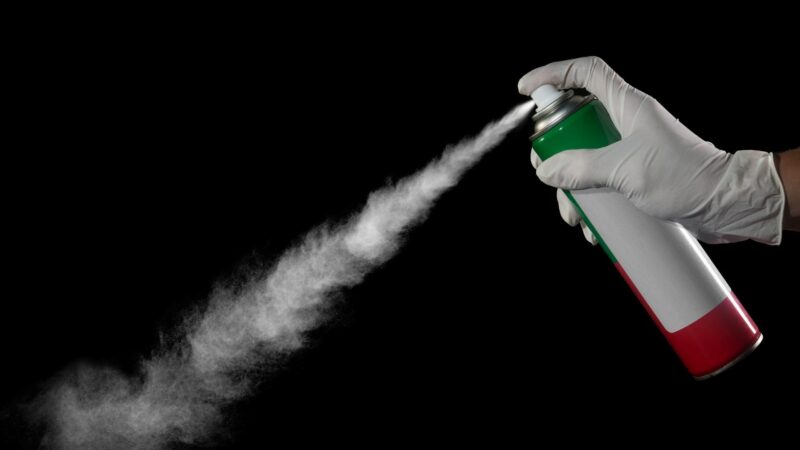
An insecticide spray can kill a wasp. You can use aerosol wasp or hornet spray like Hot Shot Wasp and Hornet Killer and Spectracide Wasp and Hornet Killer3 . Then, you have to spray the entire nest so that it ends up getting drenched.
- KILLS ON CONTACT: Hot Shot Wasp and Hornet Killer controls wasps,...
- UP TO 27 FOOT JET SPRAY: With a jet spray that reaches up to 27...
- NON-STAINING: This product is non-staining to most home siding...
- FOR OUTDOOR USE: Apply at sunset when insects are least active.
- AEROSOL SPRAY: Water-based formula eliminates the nest.
You can have the handheld spray if the wasp nest can be easily accessed. When necessity asks for it, you have to select the one with a long nozzle.
Be attentive to spray each wasp as they get out of the nest. It’s to ensure that you kill the entire colony before you can destroy the nest.
Another option is insecticide dust, but you must have a bulb or bellow duster. The best options in the market are Control Solution D-fence Dust , Delta Dust Multi Use Pest Control , and Rockwell Lab Dust Insecticide .
- Active Ingredient: 0.05 Deltamethrin
- non-staining and odorless.
- residual control of up to 8 months if undisturbed
When professionals use the dust, they hold onto dusters with a long pole. So, they can reach the nest even if it’s in a constricted area. If you do it, be careful not to tear the paper envelope of the nest as it will make the wasps scatter.
Wait for 3 to 4 days to confirm whether all the wasps die or not after covering the nest with insecticide dust.
If you don’t want either of the first two options, you can make a water and soap mixture. But this is relevant if you only have a few wasps in your house.
After you make the mixture, you can spray it on the wasp. It will die since the soap blocks its breathing pores.
Does Killing a Wasp Attract More?
The wasp is one of the insects that release a pheromone, a chemical that is utilized when mating, finding food taking advantage of food sources, and escaping predators. It can be airborne, and it travels slowly but doesn’t fade away.
However pheromones are conveyed in different signals as concentrations or combinations differ. Still, a dying wasp can send it to others. As long as you are fully covered with the right items to kill them, you’re good.
If the number is too high for you to handle, it’s best to leave it to professionals.
How to Remove a Wasp Nest From the House?
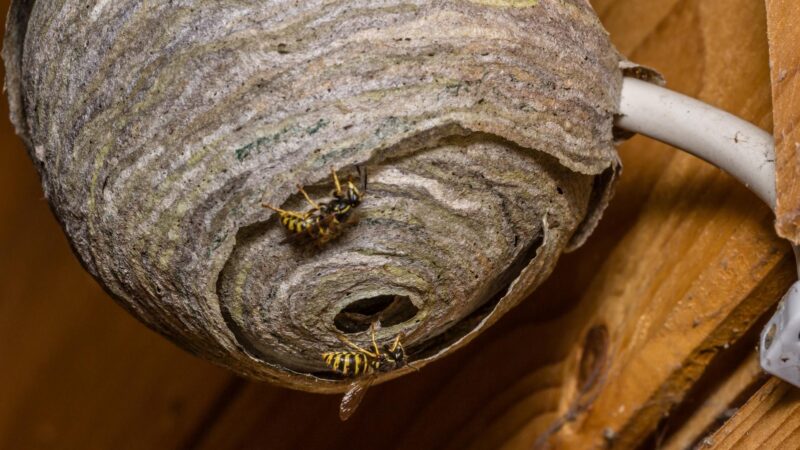
You can remove a wasp nest from the house by covering the nest with a large plastic bag. Close the bag around it then cut the limb.
Will Wasps Come Back if You Destroy Their Nest?
Wasps don’t come back as they usually die in fall or late October due to the freezing temperature. The sole survivor is the queen, and she will build another nest.
List of Sources
Russell, H. (2010). Controlling wasps in yards and structures. Michigan State University.
Potter, M. F. (2018). Controlling Wasps, Hornets, and Yellowjackets. University of Kentucky.
Murray, K. Wasps, Hornets and Bees. Maine School IPM Program.
Bees and Wasps and Schools. U.S. Environmental Protection Agency.
- Bed Bug Surge 2025: How to Detect, Prevent, and Safely Eliminate Infestations in Top U.S. Cities - June 18, 2025
- Asian Needle Ants Invade US Homes: 2025 Guide to Identification, Risks, and Effective Control - June 11, 2025
- New World Screwworm Alert: How US Livestock Owners Can Prevent Outbreaks and Protect Herds [Summer 2025 Update] - June 8, 2025





